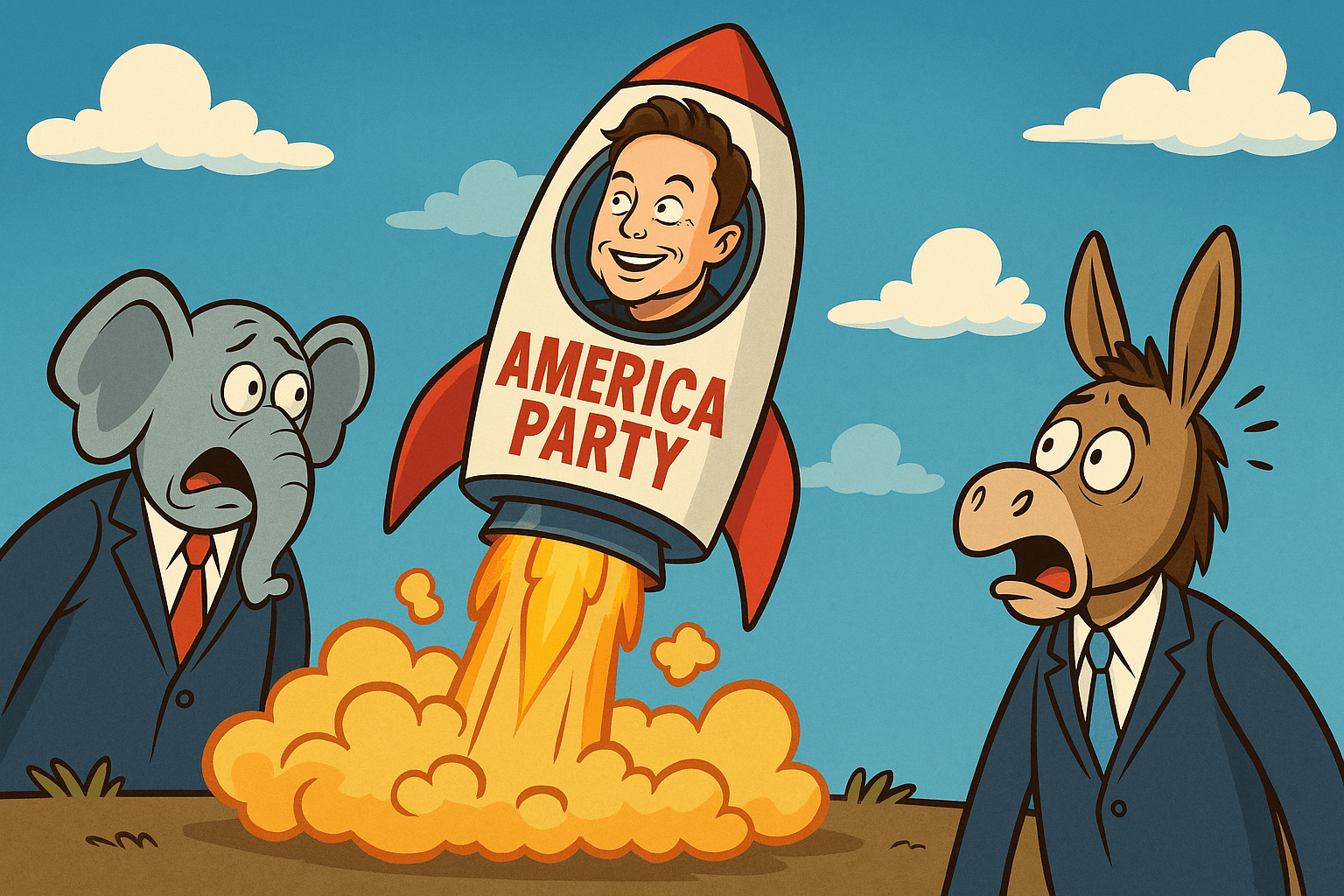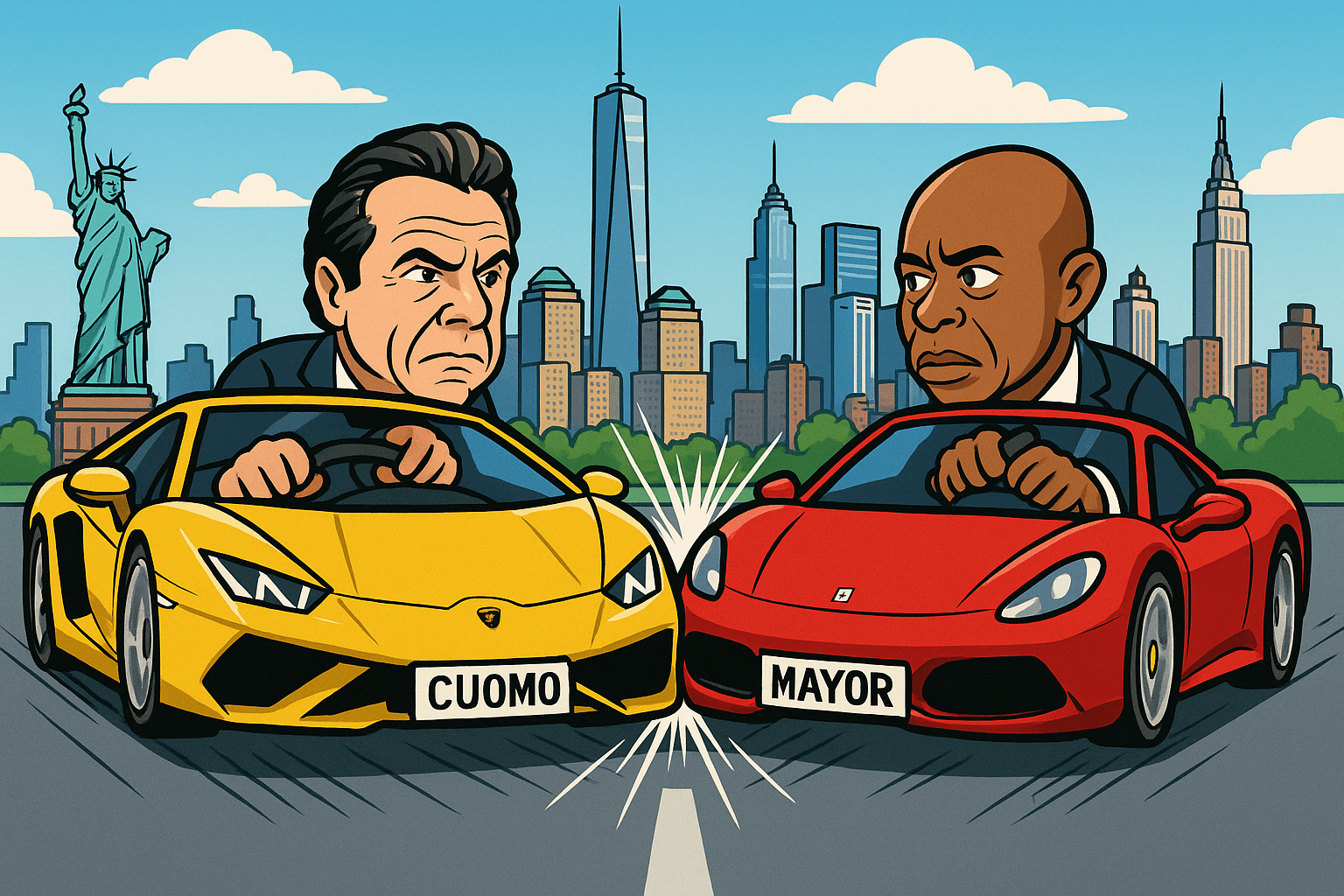Liz Cheney Thinks a Third Party Might be Needed. Do Americans Want One?

Editor's Note: This op-ed originally published on Dan Sally's website and has been republished with permission from the author. Photo by Marek Studzinski on Unsplash
At a forum in Minneapolis last week, former representative of Wyoming, Liz Cheney, stated it might be necessary to form a new party for conservatives unhappy with the GOP’s shift towards Trumpism and the MAGA movement.
Finding recruits shouldn’t be hard, given Trump appears on the way to kicking everyone out of the party but himself. The ever-widening circle of current and former Republicans opposing Trump includes 200 alumni of the Bush, McCain, and Romney campaigns and former members of the Trump administration - so this new party would theoretically have access to people who know how to win campaigns and implement policy.
This would also align with some of the most successful third-party bids in American history - all of which have been comprised of insiders from one of America’s two major parties breaking off over policy differences.
But it can’t be understated that the most successful third-party bids in American history have all failed to win an election. America’s first-past-the-post system favors two major parties by awarding the presidency to the candidate with the most votes in each state, pressuring voters to choose between them rather than support unlikely third parties, and discouraging the growth of alternative political movements.
So what does history tell us about the potential for a Trumpless conservative party to take hold, and - if it did - is this what voters want?
Third Parties in America: A History of Failure
Since the death of the Whigs in the 1850s, no party has successfully challenged the Democratic and Republican Parties. This being said, both parties have been comprised of different coalitions over the years, with third-party bids often sparking a political realignment.
Disagreements within the GOP over labor rights and regulating business led Theodore Roosevelt to form the Progressive Party with fellow Republicans and other activists, launching the most successful third-party bid in American history. In the 1912 election, Roosevelt secured over 27% of the popular vote and 88 electoral votes - splitting the Republican vote and allowing Woodrow Wilson to win with a little over 40% of the popular vote.
While the Progressive Party dissolved in the years that followed, it ultimately led the GOP to modernize its platform and make it more responsive to voters’ desire for government to serve as a check on business interests.
Decades later, internal divisions within the Democratic Party over the issue of segregation would result in two third-party bids - one in 1948 under Strom Thurmond and the second in 1968 under George Wallace. Both managed to win a handful of states in the South, securing 39 and 46 electoral votes respectively.
While neither can be credited with denying Democrats the White House, the 1968 election led GOP to appeal to white Southern Democrats who had become disillusioned with their party’s embrace of the Civil Rights Movement, paving the way for Republican dominance in the region in the years that followed.
How Trump is Different
The key difference between the Trump Era and prior political realignments is that, while prior political realignments were the result of political insiders taking voters away from a party over policy disagreements, Trump was a political outsider who brought new voters in.
This is largely due to the fact that presidential primaries weren’t widely adopted until the 1970s - meaning parties had a way of quashing candidates who didn’t appeal to the establishment. This left figures like Roosevelt, Thurmond, and Wallace no option but to launch insurgent third-party bids.
In contrast, Trump used populist rhetoric to pull disaffected voters from outside traditional Republican circles into the primary process and exploit a crowded candidate field to secure the nomination. In essence, he used primaries to launch his own insurgent candidacy from within.
While this process sounds more democratic on its face, there are a few items to note.
The first is that party primaries are generally low-turnout affairs. Trump won the nomination in 2016 with a little under 9% of registered voters. In his most recent primary, he upped his support to 10%.
The second is that, in their current form, primaries don’t require a majority of votes to win - just more votes than anyone else. In Trump’s case, that number was a little less than 45% of all ballots cast in the 2016 GOP primary.
This makes it far too easy for candidates to secure the nomination of a major party by appealing to a small group of polarized voters, producing a candidate who might be in touch with the party’s base, but less appealing to the general public.
There’s ample evidence to support this, outside of Trump’s inability to secure a majority of the popular vote in 2016 and 2020. Kari Lake, Blake Masters, Herschel Walker, Don Bolduc, and Doug Mastriano are all examples of MAGA candidates who used Trump’s endorsement to win their respective primaries only to flame out in the general election.
(Those are the candidates I could name off the top of my head, but I’m sure there are more.)
In this sense, the one commonality Trump has with the insurgent, populist candidates who came before him is his ability to deny his party success at the ballot box.
Do Americans Want Different Parties or Just Different Candidates?
Polling shows a majority of Americans feel a third major party is needed and the number of independent voters in America passed the 50% mark over the summer. This would indicate the timing has never been better for a new political party to take root.
Despite the seemingly favorable environment, new parties attempting to capitalize on voter disenchantment with the two-party system have floundered, and America’s established minor parties have failed to gain traction. Non-partisan organization No Labels abandoned its plans to launch a bipartisan unity ticket for president after failing to recruit a candidate, and Green Party candidate Jill Stein and Libertarian Chase Oliver are polling at around 1%.
Many reformers blame America’s winner-take-all system of elections, where the candidate with the most votes wins and no rewards are given to second or third-place finishers. This encourages voters to line up behind one of two major parties, rather than inadvertently helping their least favorite major party candidate win by “wasting” their vote on a long-shot candidate.
When the threat of spoiling an election is removed, minor party and independent candidates don’t appear to fare much better.
In 2020, Alaska paved the way for more party competition with the adoption of a top-four primary system. Where Alaska previously used a closed primary system where only registered party members choose their party’s candidate, the top four system allowed independents to participate in an open non-partisan primary where all candidates from all parties competed for all voters.
This created a green field for independent and minor party candidates, as the top four vote-getters in the primary advanced to the general election which was determined by ranked-choice voting - meaning a four-way race was guaranteed and there was no threat of minor party candidates acting as spoilers.
However, the result hasn’t been an increase in support for candidates outside the two-party system, but rather a rise in support for more moderate candidates within the two major parties. Both Democratic Representative Mary Peltola and Republican Senator Lisa Murkowski managed to beat Trump-backed candidates in the 2022 general election, and Peltola recently garnered over 50% of the vote in the 2024 primary against another Trump-backed challenger, Nancy Dahlstrom, who won a little under 20%.
In contrast, the highest-placing candidate from outside the two major parties came in 5th with 0.6% of the vote. In 2022, the Libertarians were outperformed by Santa Claus.
Kill the Primary, Or Change It?
The political realignments of the 20th century and the one we’re living through now have a common thread: all have been driven by constituencies who felt ignored by the party establishment. Before the introduction of primaries, third-party bids were the only way for these constituencies to mobilize and affect policy.
In this sense, Cheney’s suggestion of a new conservative party might be a bit of an anachronism.
If the problem of the 20th century was too much control in the hands of the party establishment, the problem of this century is too much control in the hands of the party’s base. Over the past 50 years, a shrinking group of the most polarized voters has been responsible for determining our choices on the ballot, and a growing number of Americans have become dissatisfied with the choices they produce.
The current realignment shows us the potential pitfalls of a system where those same ignored constituencies can quickly become the establishment. To his supporters, Trump is more of a Roosevelt - a larger than life figure hell bent on taking on wealthy interests in the name of the American worker. To his detractors, he’s a Wallace - preying on racial and economic anxieties to impose his backwards vision on the country.
The truth probably lies somewhere in the middle, as do a majority of American voters, and it’s that middle that’s become the ignored constituency. Alaska’s model shows a way to pull them back in.








